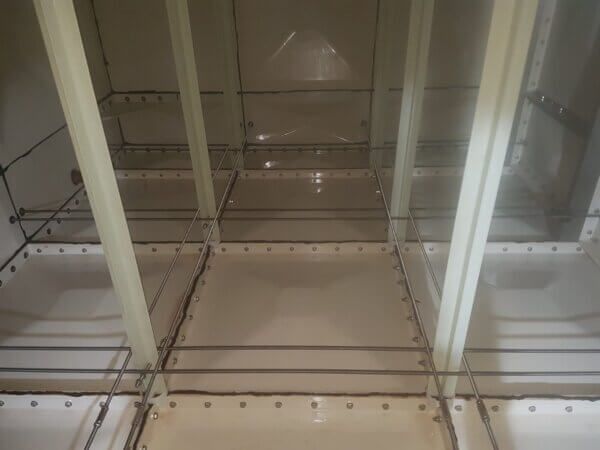CWST Cleaning & Disinfection
In water treatment, the cleaning & disinfection of cold water storage tanks is imperative to ensure the water going though your system is clean, safe and free from debris.
Your annual water treatment service should include an annual clean and disinfection of the tanks along with an annual online disinfection of the system (at a 6 month interval between both) to ensure your water quality remains top notch.
But what do we mean when we say full C&D and online disinfection?
Find out here.
Full clean and disinfection
Full clean and disinfection of water tanks refer to the process of thoroughly cleaning and sanitizing water storage tanks to remove any accumulated sediment, debris, and microbial contaminants.
This process typically involves the following steps:
Draining: The tank is emptied of all water and sediment.
Scrubbing: The interior surfaces of the tank are scrubbed to remove dirt, rust, and other deposits using appropriate cleaning agents or brushes.
Rinsing: The tank is rinsed thoroughly to remove any remaining debris or cleaning agents.
Disinfection: A disinfectant solution is applied to the tank surfaces and allowed to sit for a specified period to kill any remaining microorganisms. The solution is then flushed out of the tank.
Refilling: The tank is refilled with clean, potable water.

Full clean and disinfection of water tanks is typically conducted periodically or when there are visible signs of contamination or deterioration.
Here at Aquachem we use Sanosil as the disinfectant in the tanks which provides a superior clean and saves 66% water compared to when using chlorine. This is due to the fact that Sanosil does not need to be triple rinsed, unlike Chlorine, so you are fulfilling your sustainability goals while the task is being done.
Online disinfection
On the other hand, online disinfection refers to the continuous or intermittent disinfection of water within the distribution system, rather than specifically targeting the storage tanks. This method aims to maintain the microbiological quality of the water throughout the entire distribution network.
Online disinfection involves the addition of disinfectants at specific points in the distribution system, such as at water treatment plants or booster stations. The disinfectant residual is maintained within the system to control microbial growth and ensure the water remains safe for consumption.
While full clean and disinfection of water tanks focus on eliminating contamination within the storage tanks themselves, online disinfection targets the broader distribution network to prevent microbial growth and maintain water quality during transport to consumers.
Both processes play important roles in ensuring the safety and quality of drinking water, but they differ in their specific objectives and the areas of the water supply system they address.
Cleaning & Disinfecting
Cleaning and disinfecting water storage tanks is of utmost importance for several reasons
Water quality: Water storage tanks can accumulate sediment, debris, and microbial contaminants over time. If left unchecked, these contaminants can compromise the quality of the stored water.
Health and safety: Drinking water contaminated with pathogens can lead to various waterborne diseases, such as diarrhea, cholera, dysentery, and typhoid. Regular cleaning and disinfection of water storage tanks help minimize the risk of these diseases, protecting the health and safety of consumers.
Longevity of the storage tanks: Regular maintenance, including cleaning and disinfection, helps extend the lifespan of water storage tanks. Accumulated sediments and contaminants can corrode the tank walls, leading to structural damage and reduced durability. Cleaning and disinfecting tanks prevent corrosion and preserve the integrity of the tanks, ensuring their long-term functionality.
Optimal water flow and distribution: Sediments and debris in water storage tanks can impede water flow, causing blockages and reduced water pressure. By cleaning the tanks, obstructions are removed, allowing for smooth water flow and efficient distribution within the network.
Odor and taste improvement: Contaminated water stored in tanks can develop unpleasant odors and tastes due to the presence of organic matter and microbial growth. Cleaning and disinfection remove these contaminants, resulting in better-tasting and odor-free water.
Overall, cleaning and disinfecting water storage tanks are critical steps in maintaining a safe, reliable, and high-quality water supply. Regular maintenance helps prevent waterborne diseases, ensures regulatory compliance, preserves the integrity of storage tanks, and enhances the overall water quality and consumer satisfaction.
